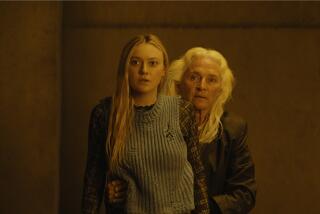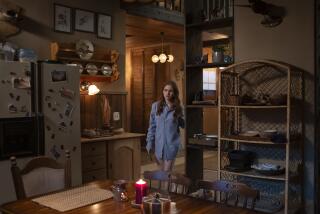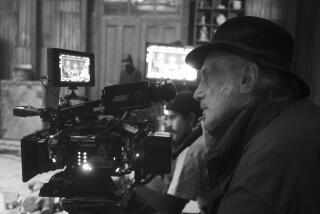Review: ‘Visitors’ reveals faces in the crowd but not much else
It’s playing in theaters and charging admission, but “Visitors” is not what it seems. It’s an art piece masquerading as a movie, and whether you think that’s a good thing will determine your reaction to what’s on the screen.
“Visitors” is also the latest collaboration between director Godfrey Reggio and composer Philip Glass, who’ve previously combined to produce celebrated trance-inducing documentaries like “Koyaanisqatsi” and “Powaqqatsi.”
This time part of the focus is somewhat different. Instead of concentrating on landscape, “Visitors” concerns itself with the human face. Presented to the public in black and white digital 4K projection, the film lets us look directly into the huge faces of 80 people, some appearing by themselves, some in groups.
VIRTUAL TOUR: Hollywood’s Walk of Fame
Though the film itself reveals nothing about anyone, extensive press notes disclose that the older members of the group were shot in a New Orleans retirement home; the younger folks were photographed watching television or video games. Seen as well, for no discernible motive, are sequences of disembodied hands.
We also get to spend time, for reasons we’re left to surmise, at various odd corners of the physical world. There are shots of the moon, footage of abandoned amusement parks, time-lapse images of clouds scuttling past huge buildings, even infrared pictures of rather startling trees in Louisiana’s Atchafalaya Basin near where Reggio grew up. Not to mention pictures taken in a massive New Jersey garbage dump and images of the Unisphere, the symbol of the 1964 New York World’s Fair.
Reggio insists with great conviction in those extensive press notes that his films “are not aimed at the head or the cerebellum. They’re not aimed at making sense. They’re aimed at your solar plexus. They are a visceral form of cinema.”
BEST MOVIES OF 2013: Turan | Sharkey | Olsen
It all sounds quite convincing in theory, but in practice this mélange of imagery is aimed more at the inside of Reggio’s head than anywhere else. Unless you are able to get on his quasi-experimental wavelength, a dicey proposition at best, “Visitors” will miss your solar plexus entirely and instead put you right to sleep. With one exception.
The most memorable shot in “Visitors,” so unnerving that Reggio starts and ends the film with it, has a female lowland gorilla named Triska staring at the camera from the comfort and safety of “her controlled environment in The Bronx Zoo, New York.”
More disturbing and involving than everything else in the film put together, Triska’s unwavering gaze haunts us still. We don’t know what it means or where it comes from, but we can’t get it out of our minds. Too bad it’s the exception in “Visitors,” not the rule.
More to Read
Only good movies
Get the Indie Focus newsletter, Mark Olsen's weekly guide to the world of cinema.
You may occasionally receive promotional content from the Los Angeles Times.











